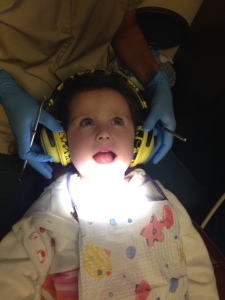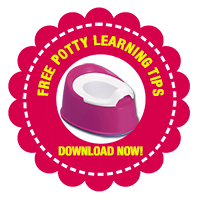Cavities can sneak up on your family quickly! I thought my 4-year-old had great brushing habits, but it wasn’t enough! You already know that lots of sugar, fruit and carbs can cause cavities, but I was even told that my daughter was probably eating too much sugar-free goat yogurt. Because toddler and preschooler food is challenging for parents anyway, it can make more sense to look at cavities from the after-food hygiene angle instead.
1) Floss! Yes, floss your child’s toddler or preschooler’s teeth, especially any teeth
especially any teeth
which touch one another. It’s a hygiene habit to start sooner rather than later. I write this post because though we always did a great job brushing and there was zero sugar and we occasionally loved to floss, we weren’t flossing regularly. I mean twice per day. My daughter developed a huge cavity because I wasn’t flossing my daughter’s teeth regularly and I didn’t see the cavity until it was large enough to need a filling.
2) Let them brush after you brush the teeth. We don’t want to discourage them by having them think that they didn’t do a good enough job and now we have to finish it. We get the main job done and then we let them know that there might still be some food in there so they should keep brushing. Once they have shown good brushing skills, circles, all of the teeth!), we can tell them they’ve graduated to doing it on their own. Likely 4-years plus.
3) Model how to hold the toothbrush, brushing in circles, and show with your own mouth all of the places the brush should go.
4) Make it part of the routine, but be flexible. Brushing and flossing needs to be both after breakfast and before bed. But if your child is resistant to this hygiene, be time flexible, ask again when he’s in a better mood. The whole family brushing together is usually best!
5) No fluoride. Young children who might swallow small amounts of the toothpaste shouldn’t have fluoride because it is toxic. Topical fluoride treatment at the dentist for an older child with many cavities may be suggested by your dentist. I had just started using fluoride toothpaste for my daughter by default of what I found at the store, thinking she wouldn’t swallow it and it might help her teeth- about 5 months before I found the cavity. I guess the fluoride did not prevent that cavity! So now we….
6) Use xylitol toothpaste or homemade. Our recipe for “Lemon Mint Fizz”
3 Tbsp coconut oil
4 Tbsp baking soda
2 tsp arrowroot
4 drops peppermint essential oil.
5 drops lemon essential oil.
3 drops stevia extract or one packet stevia powder or xylitol powder.
(I’ve crushed my baking xylitol in a mortar and pestal.)
If little ones don’t like the taste or texture, try plain coconut oil with some xylitol in it.
7) Diet rich in calcium. Leafy greens and bone broth soups are the best calcium intake for all of us, especially children. Milks are high in sugars and therefore not the best for teeth. Bone broth intake is said to aid in re-mineralizing damaged teeth and prevent tooth decay.
8) Oil Pulling. I know, it’s a super hippie thing to do! If you have an older preschooler who can swish and not swallow, you might try re-mineralizing and cleaning the teeth with oil pulling. Though 20 min is ideal swishing for adults, 5 min is fine for kids. Do it with them. (My teeth are so much cleaner and whiter now!) Make sure to rinse well. Here my friend Jennifer teaches you all about Oil pulling and just how to do it.
9) A holistic dentist. A holistic dentist, which you can find in most big cities, is not likely to take unneeded x-rays, can do fillings with just Novocaine and without nitrous oxide or sedation for cooperative children while they watch a movie in the ceiling. I couldn’t believe what a great experience we recently had with a filling at our new holistic dentist. There were two tiny spots on the other side that a conventional dentist wanted to fill- what would have made 3 fillings at $1000. Our new dentist said the smaller spots could be re-mineralized with the protocol she gave us and prevented from growing bigger with good hygiene. (I need to note that if your child is unlikely to cooperate with a dental visit or hates loud noises, you may need to go a more conventional sedation route.)
10) Talk about what germs and cavities are– before they happen. If you have a scientifically inquisitive child, you might show some resources that have drawings of cavities in teeth and drawings of the bacteria that cause them. My daughter enjoys brushing away the “bugs we that are too tiny to see.” (But if you have a highly sensitive child that is already dirt or germ-phobic, this may not be the best strategy!). Microbes are a part of living. To prevent germ-phobia with this conversation, it might also be helpful to talk about and show some helpful bacteria in the body as well- probiotics are a good example.
Happy hygiene!
xo- Moorea
http://www.SavvyParentingSupport.com
*Disclaimer- I am not a licensed medical or dental professional. Take what I write as a launching off point to do your own research. My advice, experience, and suggestions are not to be considered medical advice. Consult your own medical or dental professional.









Thanks for sharing dental health tips for toddlers. These are really helpful for me 🙂
You desire to present your topic along side anything you already know will raise their awareness, for
a greater potential for taking that elusive airtime. She has dedicated time for you to the efforts of within their purpose
to provide parental net protection instruments and sources for
the public. Learn Mindset totally online in a state-of-the-art online program given by the NACE.